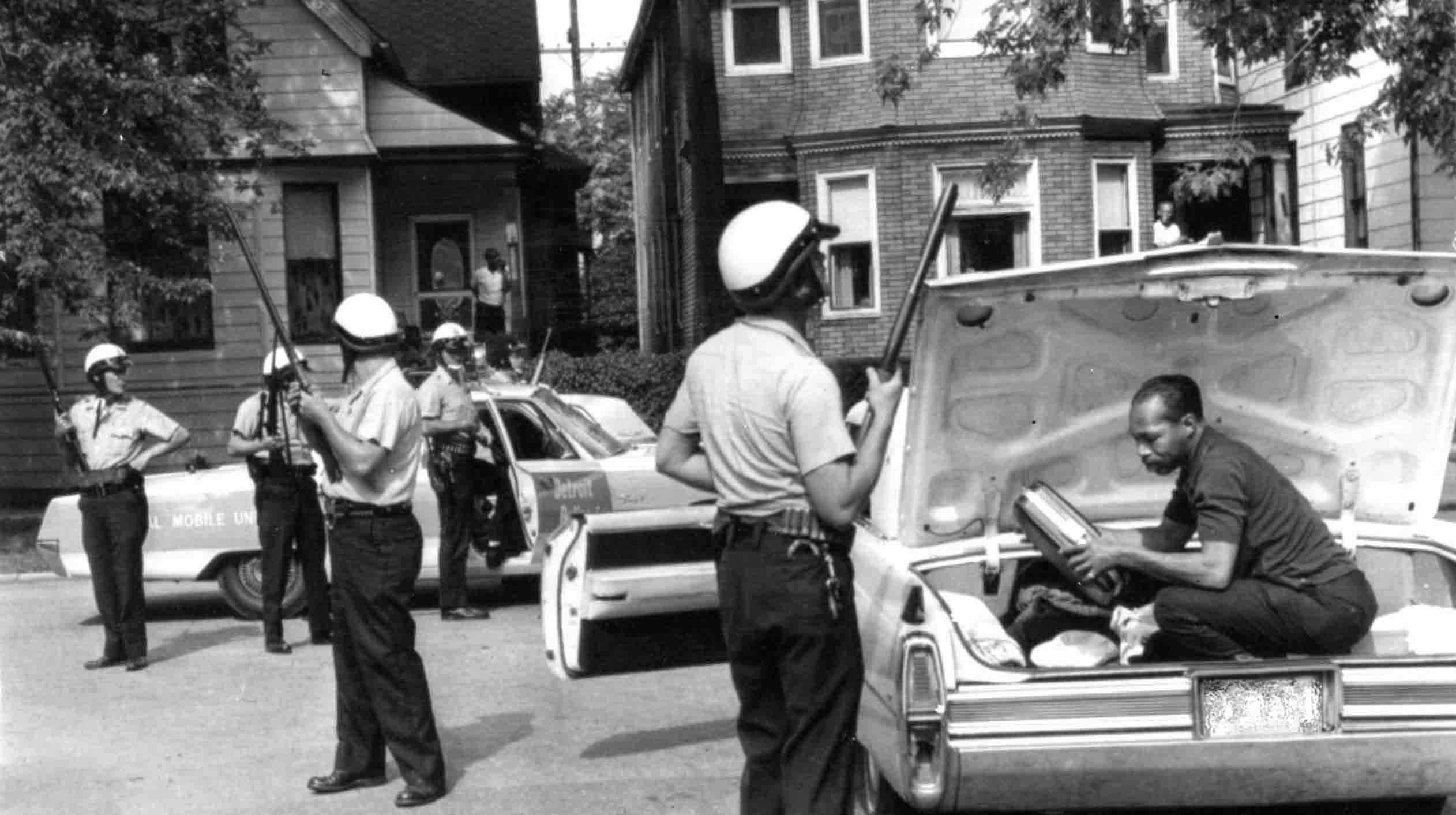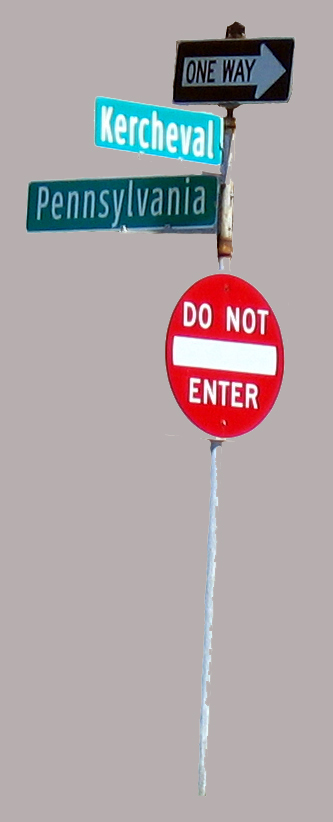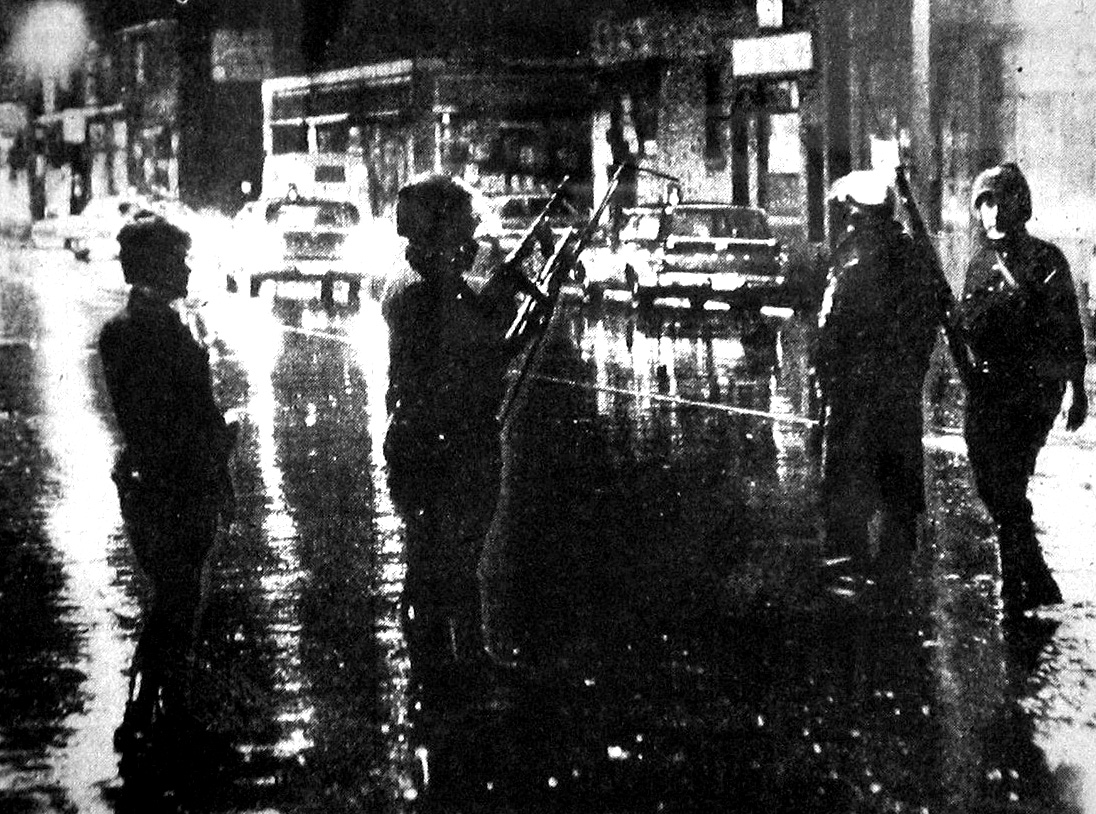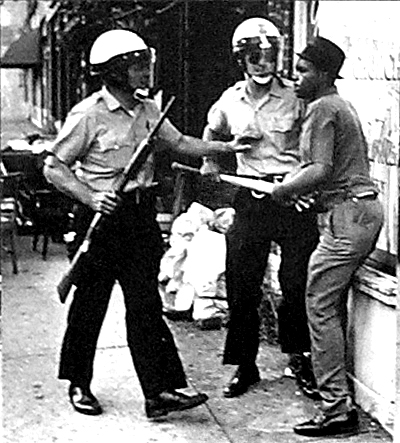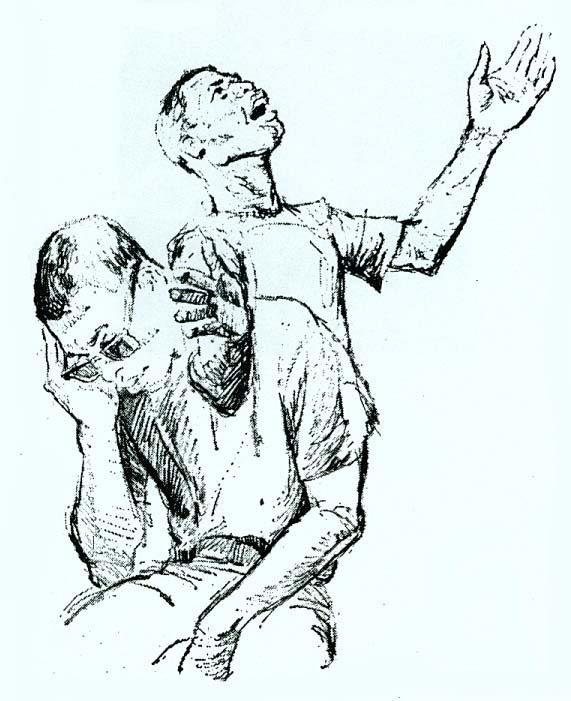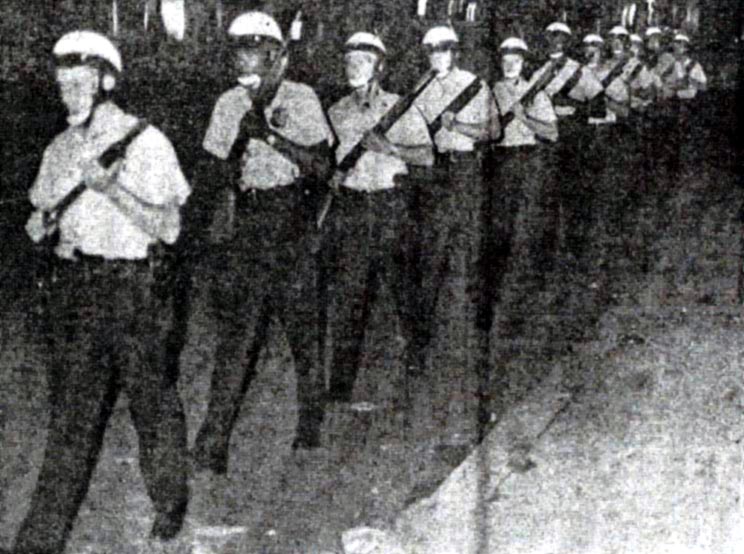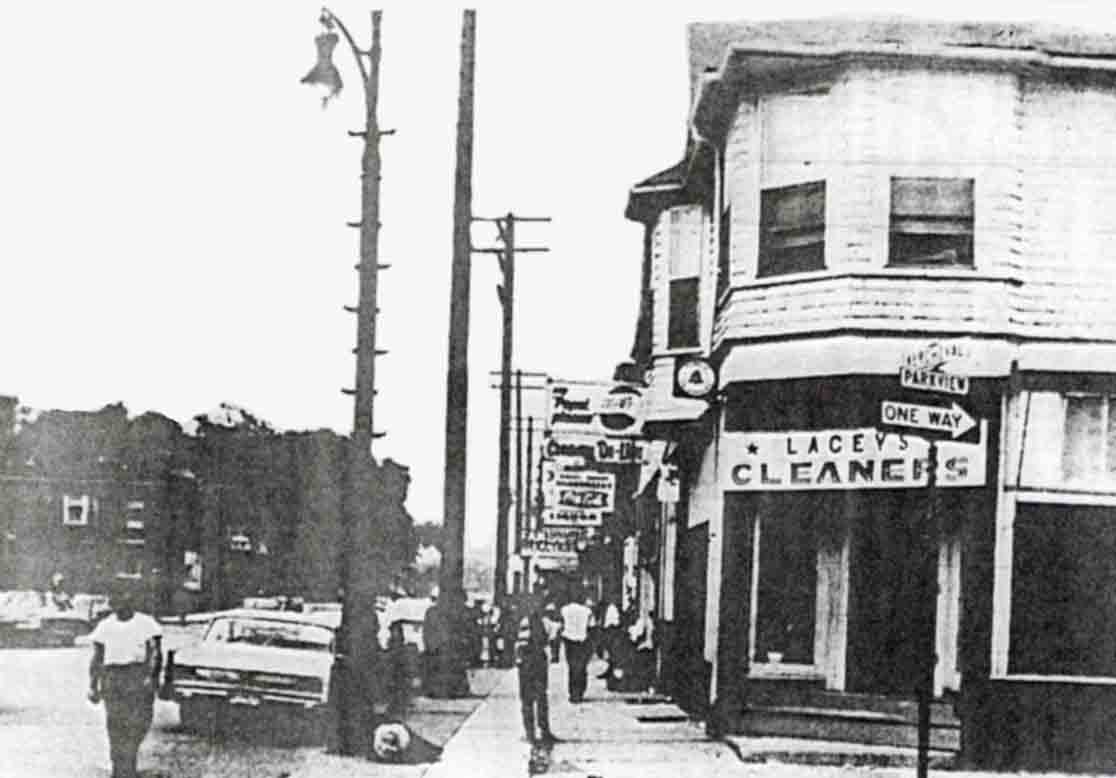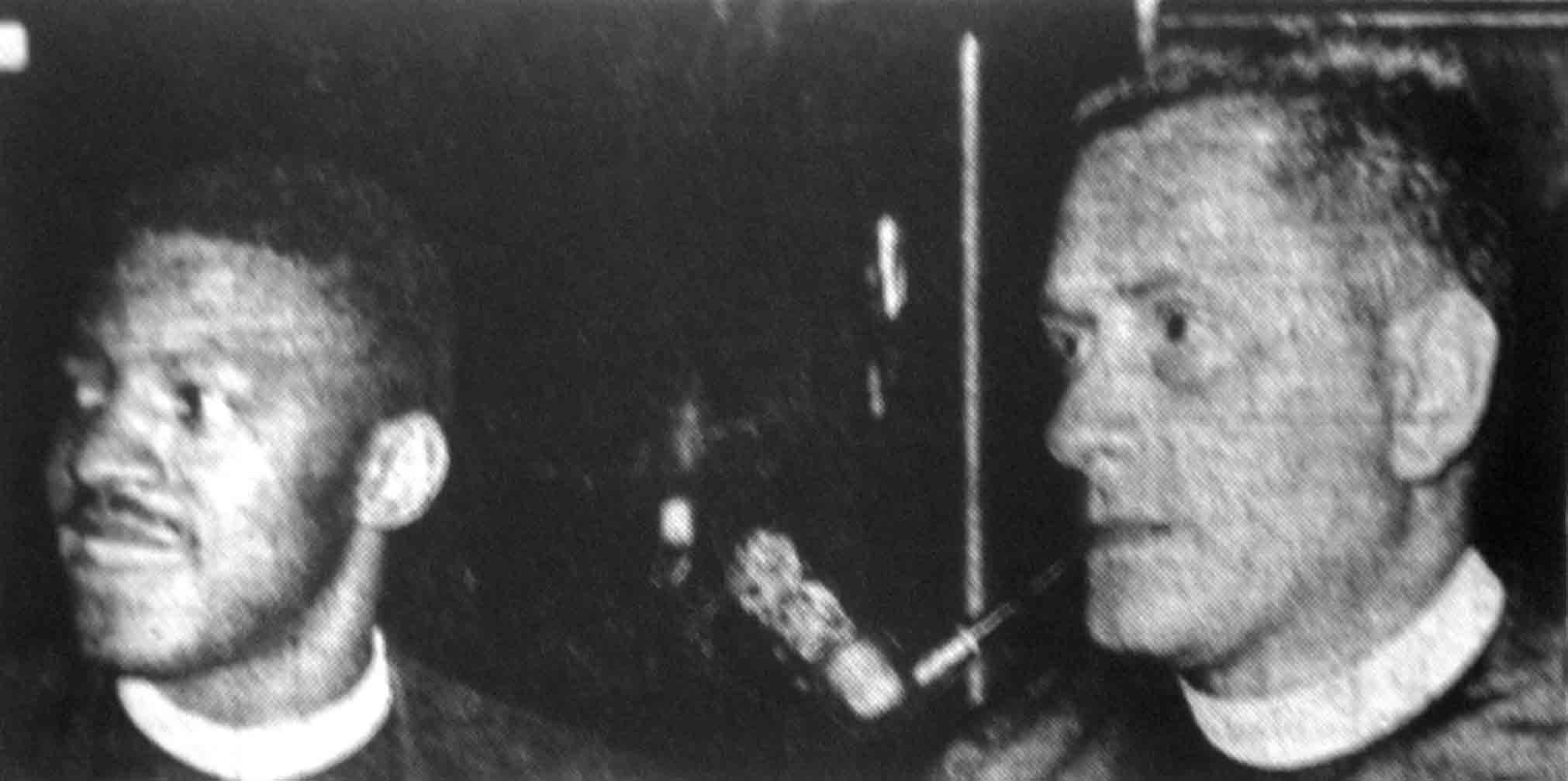“Ye shall above all things be glad and young” goes the opening line of the E.E. Cummings poem, “For if you’re young, whatever life you wear, it will become you.” On Detroit’s far east side, this philosophy, although originally intended in a positive light, can readily be seen here in a negative one. The neighborhood surrounding Kercheval Street is one noticeably lacking in revelment. It is a neighborhood like many in big city America of the 1960s that seems to have been left out of the progressive loop.
Kercheval seems hopelessly sandwiched between modern day prosperity and the urban poverty of the past. At the southwest end of Kercheval, the city’s sparkling new Lafayette urban renewal project can be found. Now more than 15 years in the making, it quickly became the city’s showpiece. To the east, just over the endless canopy of oak trees, can be seen the modern day high-rises of Jefferson Avenue that bristle with progress and prosperity. The showy concrete cathedrals seem to glower down arrogantly over the deprived of Kercheval, a street time has seemingly passed by.
(Above) - In the background, the opulence and luxury of modern high-rises looms brazenly over the downtrodden of Kercheval. Nowhere is the contrast between the haves and the have nots more self evident than off Kercheval on Detroit’s east side. Perhaps this explains why the east side set the precedent in rioting a year before its west side rival.
It was here in the late summer of 1966 that frustration boiled over into anger. The Kercheval mini-riot was
a third-rate riot by all accounts, but it was the first sign that something was terribly amiss in Detroit.
The administration attempted to downplay the mini-riot by referring to it as an “incident,” but the undercurrent of anger was there and no public relations machine was going to dissipate it. At the conclusion of every summer, the administration congratulated themselves on another riot free summer, proof positive that their social programs were working.
But beneath the rosy headlines the veneer of civility which the Model City image exuded had worn down, and now the hostility was beginning to show through. Cavanagh’s star, which once shone brightly in the black community, had now dimmed considerably. A Kercheval resident echoed these sentiments about the mayor. “Him and that urban renewal. Man, they steal my house, put those peckerwoods [whites] in it, then tell you to move to some worse house 200 years old. I’m tired of running, tired of being pushed. There’s no place else to go. I hope to God it breaks out full scale. If I die, I’d rather die for something.”
The poor look out into a different world, through a prism that reflects only poverty, turbulence and despair. They live in a constant state of want for the things they know they will never have. Impoverished youth like this one conceal a hundred different agonies.
With opportunity lacking, the mood of the ghetto is poisonous and self-destructive.
The seeds of despair take hold of the very young, drain them of their enthusiasm and replace it with fatalism. The poor do not look at life in terms of days, weeks or years but rather from a survivalist view of hours or minutes because they view their long-term future as nonexistent.
Kercheval seemed to abound with militant groups who loathed the white establishment, particularly the group known as the Afro-American Youth Movement. Its members were philosophically out of phase with the civil rights movement. Pacifism was great during massive demonstrations when the cameras were rolling, making people accountable. But in the dark shadows where back alley justice could be conducted, this concept didn’t work.
The Kercheval militants were bent on starting a riot as a springboard for their black revolution.
The Tactical Mobile Unit (TMU) of the Detroit Police Department, like the Big Four, was the terror of black neighborhoods. It was only a matter of time before the wrong policeman ran into the wrong civilian.
Riots of the 1960s generally followed certain unyielding patterns. They characteristically occurred between the hours of 6:00 and 9:00 p.m. on weekdays. They also were inherent towards hot, muggy days when people are suffering from sleep deprivation and are highly irritable. Only those generations that grew up before the era of central air conditioning can recall those “long, hot summer nights.” The hot weather was a primer, as rioters habitually did not voice their grievances in freezing weather or rain showers, preferring rather to await more agreeable climate.
Refusing to relinquish identification, the inevitable scuffle ensued. The militants, knowing this would draw a crowd, attempted to incite a riot, “This is our neighborhood and we won’t be moved. Whitey is going to kill us.”
As desired, a restless crowd quickly formed and the Big Four radioed for backup.
As luck would have it, this being 8:30 p.m. on a Tuesday, the department was at full strength. Even better, owing to an anti-Vietnam demonstration downtown, the specially trained crowd control apparatus called the Tactical Mobile Unit (TMU) was monitoring the demonstration only three miles away. The TMU was formed in 1965 especially to deal with crowds but unlike their rival the Commandos, they were specially trained to endure crowd slander and provocation without reacting. Their skills would soon be tested to the limit.
As the TMU continued heading east, sweeping all four lanes of Kercheval, they passed the corner of Pennsylvania where the melee started. Over 100 angry spectators were crowding the four corners, shouting threats at the heavily armed TMU as they marched by, “Wait till tomorrow night. It’ll be just like Vietnam.” The anger was certainly there but not the numbers or leadership. One bemused spectator just shook his head, “Hell, they did a much better job in Watts. They can’t seem to get this riot off the ground.”
Detroit police sealed off a mile-long stretch of Kercheval. As darkness descended on the troubled area, police search lights that had been set up on Kercheval probed the inky darkness for trouble. The flat, metallic voice of a police sergeant resonated over the loud speakers:
"Please stay off the streets. We only want the troublemakers out of the way. Please go back inside. We don’t want trouble."
The rioters, mostly frustrated teenagers “feeling their pepper,” bid a hasty retreat as the sea of blue washed over Kercheval. By 10 p.m., Kercheval was curb to curb with police. Instead of direct confrontation, the teenagers implemented a haphazard, hit and run technique. Poorly fabricated and poorly aimed Molotov cocktails sailed through the air, landing harmlessly in the street. Store front windows were broken but little if anything was looted. “The most significant thing that’s happening out there is that these kids who were taught all their lives to fear those crackers [police] can now stand up with a rock and say, ‘I’m tired of this,’ commented the leader of the Afro-American Youth Movement. “Things will never be the same again.”
As Tuesday turned into Wednesday afternoon, the tension mounted. Both sides, the DPD and the militants, waited for the other to make the first move which would trigger a full-scale riot. Convoys of heavily armed TMU vehicles, with shotguns protruding out the windows, lumbered slowly up and down Kercheval as hundreds of piercing eyes watched. One of the spectators fumed, “Look at that bayonet on that cop’s gun. Man, I’m buying a 16 gauge with my whole pay Friday.” The anger resonated, “It’s not just the police. It’s the overpricing, the insults from Whitey. And that TMU. They call it ‘crime control.’ Hell, it’s a riot squad, a Gestapo, the storm troopers. You don’t need a riot force if everything is really as good as they’re saying.”
But the triggering incident never came. By the end of the second night the DPD was aided by providence as a cold, steady rain set in, dampening hostilities and sending the revolutionaries home frustrated. It was the end of the Kercheval mini-riot but not the end of rebellious activity. As the administration backslapped and toasted each other about the conquering of Kercheval, another storm of infinitely greater intensity was brewing on the city’s west side. They had no way of knowing that providence and luck would soon part company with the Motor City.
Bayonet equipped Detroit police are silhouetted on rain drenched Kercheval as the August mini-riot draws to a close. They managed to put down the riot without firing a shot, a feat that would earn the
DPD national acclaim. For the administration, an air of complacency set in. Detroit had a riot plan, they put it into action, and it worked marvelously. Henceforth, they felt the city could handle anything with minimal force and an unhealthy sense of complacency set in. By the time the Great Rebellion was over the following summer, they wished they had never heard of Kercheval.
Being against violence is like being against sin.
It is right; it is popular; and it is easy.
However it will not diminish evil, unless you also provide alternatives to the temptations and desires which drive men towards wrong.
If the beginning of wisdom is understanding, the condition of effective political solution is knowledge of the problem.
The heavily armed Tactical Mobile Unit of the Detroit Police Department prepare to sweep Kercheval of protesters.
Above, Left: Teenagers accumulate as darkness descends at the corner of Kercheval & Parkview where the triggering incident occurred. Above, Right: Another reason the Kercheval mini riot failed, a strong community presence as preachers patrolled the sidewalks attempting to get everyone off the streets.
To E-mail me, type your message into the white form blank below and hit "Submit E-mail" button.
If you want a response you must include your name and E-mail address in the body of the message.
